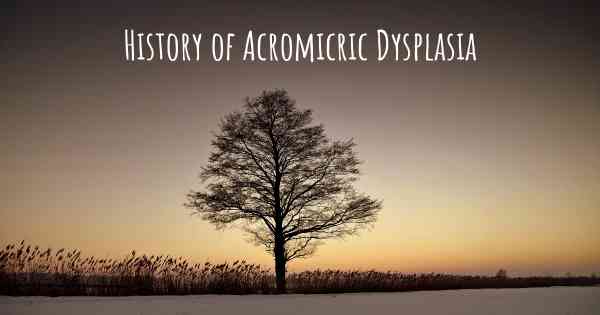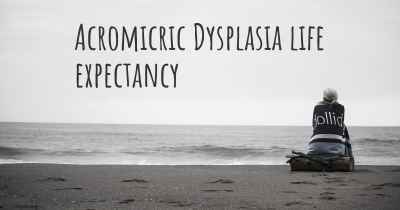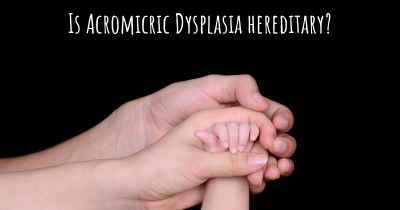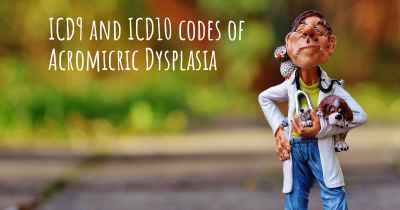What is the history of Acromicric Dysplasia?
When was Acromicric Dysplasia discovered? What is the story of this discovery? Was it coincidence or not?

Acromicric Dysplasia: A Rare Genetic Disorder
Acromicric dysplasia is a rare genetic disorder that affects bone and cartilage development, resulting in distinct physical characteristics and potential health complications. First described in medical literature in the late 1970s, this condition has since been the subject of extensive research and clinical studies. Understanding the history of acromicric dysplasia provides valuable insights into its discovery, diagnostic criteria, and ongoing efforts to improve patient care.
Discovery and Early Descriptions
The first documented case of acromicric dysplasia was reported in 1978 by Dr. David L. Rimoin and his colleagues. They described a 14-year-old girl with unique skeletal abnormalities, including short stature, short hands and feet, and distinctive facial features. This initial case report laid the foundation for further investigations into the disorder.
Diagnostic Criteria and Genetic Basis
Over the years, researchers have refined the diagnostic criteria for acromicric dysplasia. The condition is characterized by specific physical features, such as short stature, short hands and feet, joint limitations, and distinctive facial appearance. Additionally, affected individuals often experience health issues related to their skeletal system, such as spinal abnormalities and joint stiffness.
Advancements in genetic research have revealed that acromicric dysplasia is caused by mutations in the FBN1 gene. This gene provides instructions for producing a protein called fibrillin-1, which is essential for the formation of connective tissues. Mutations in the FBN1 gene disrupt the normal structure and function of fibrillin-1, leading to the characteristic features of acromicric dysplasia.
Genetic Discoveries and Molecular Mechanisms
Since the identification of the FBN1 gene's involvement in acromicric dysplasia, researchers have made significant progress in understanding the molecular mechanisms underlying the disorder. They have discovered various specific mutations in the FBN1 gene that contribute to the development of acromicric dysplasia.
Studies have shown that these mutations disrupt the assembly and organization of microfibrils, which are essential components of connective tissues. This disruption affects the signaling pathways involved in bone and cartilage development, leading to the characteristic skeletal abnormalities observed in individuals with acromicric dysplasia.
Prevalence and Inheritance Patterns
Acromicric dysplasia is an extremely rare disorder, with an estimated prevalence of less than 1 in 1,000,000 individuals. It appears to affect males and females equally, and there is no known ethnic or geographic predisposition.
The inheritance pattern of acromicric dysplasia is autosomal dominant, meaning that a single copy of the mutated FBN1 gene is sufficient to cause the disorder. In most cases, affected individuals inherit the mutation from an affected parent. However, sporadic cases can also occur, where the mutation arises spontaneously in an individual with no family history of the condition.
Current Management and Future Directions
As acromicric dysplasia is a rare disorder, there is no specific cure available. Treatment primarily focuses on managing the symptoms and associated health issues. Regular monitoring by a multidisciplinary medical team, including orthopedic specialists, geneticists, and other relevant healthcare professionals, is crucial to address the specific needs of affected individuals.
Ongoing research aims to further elucidate the molecular mechanisms underlying acromicric dysplasia and explore potential therapeutic interventions. Genetic counseling is also an essential aspect of patient care, providing affected individuals and their families with information about the inheritance pattern, recurrence risks, and available support networks.
Conclusion
Acromicric dysplasia is a rare genetic disorder characterized by distinct physical features and skeletal abnormalities. Its discovery in the late 1970s paved the way for subsequent research into its diagnostic criteria, genetic basis, and molecular mechanisms. Although there is no cure for acromicric dysplasia, ongoing efforts in medical research and patient care aim to improve understanding, management, and support for individuals affected by this condition.








